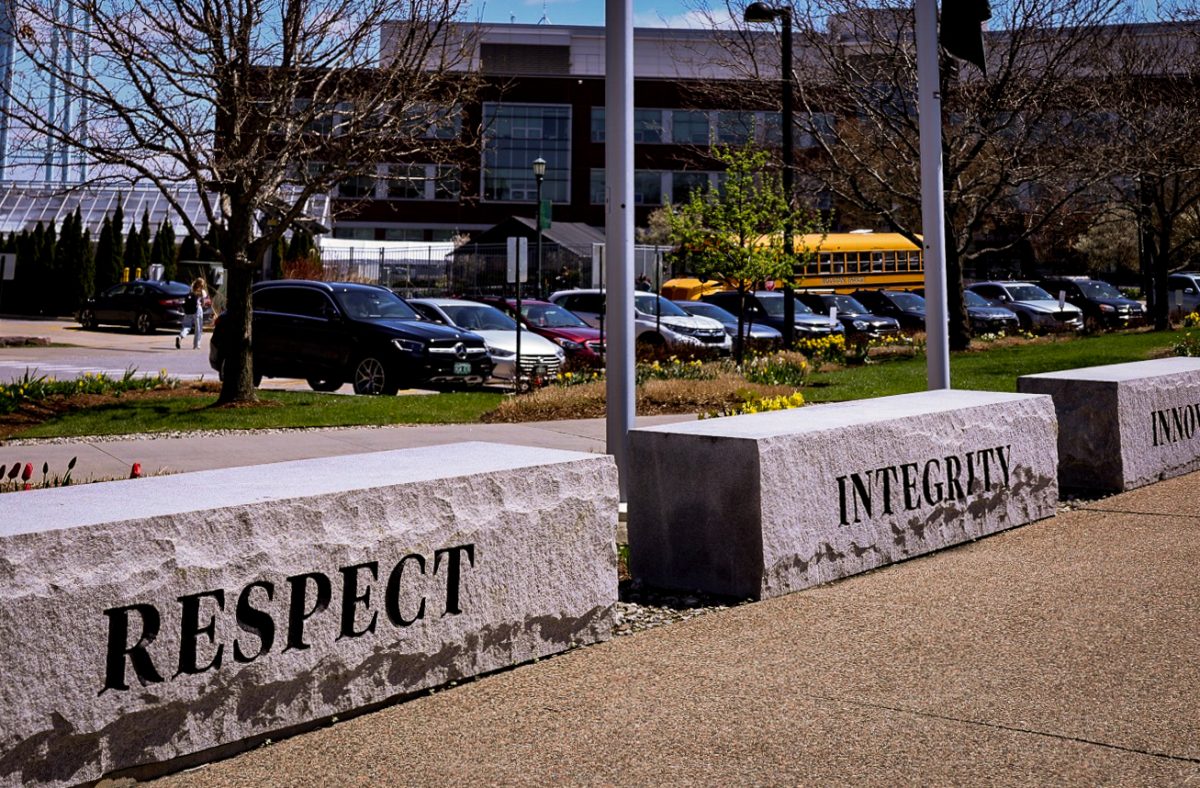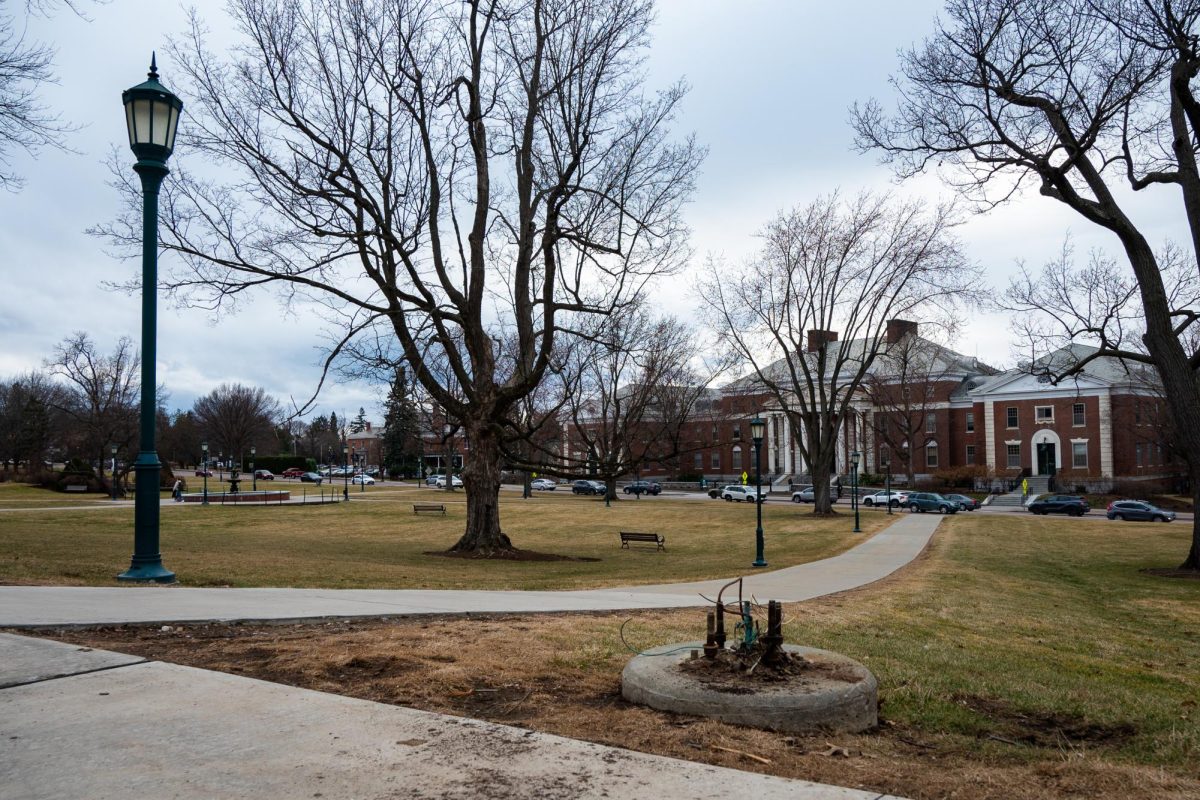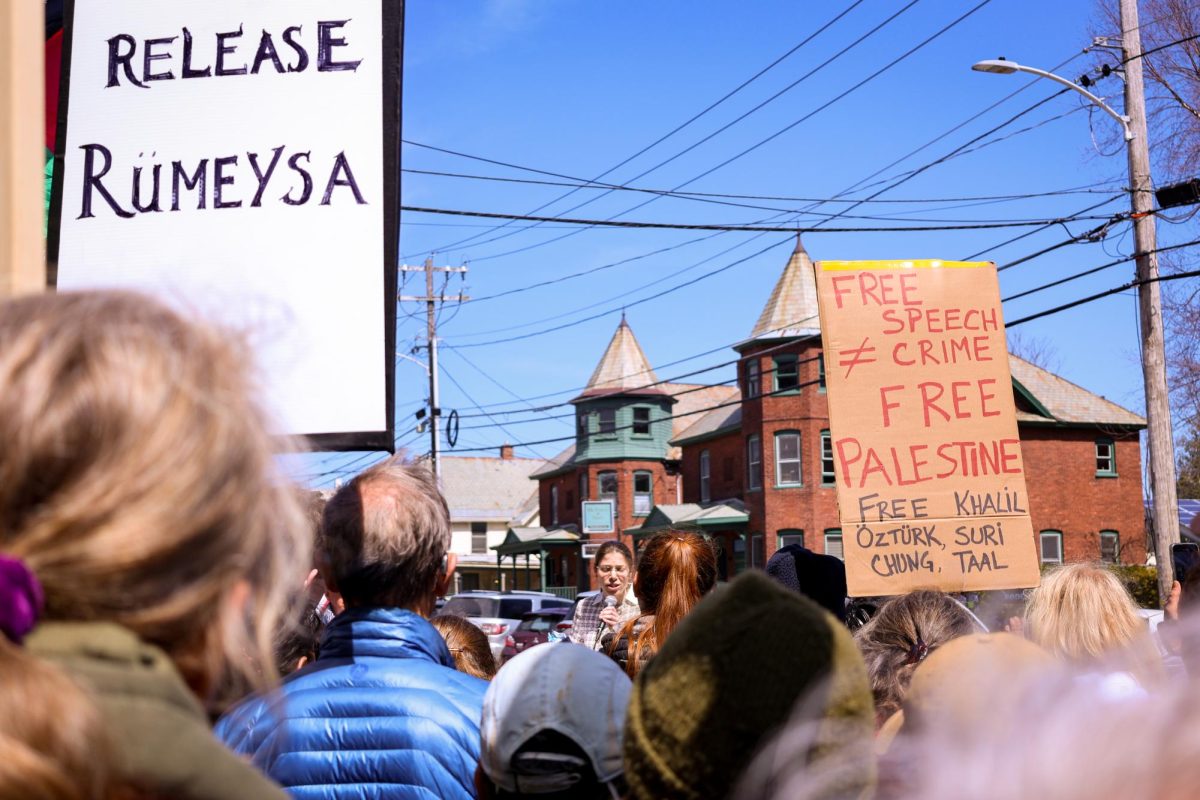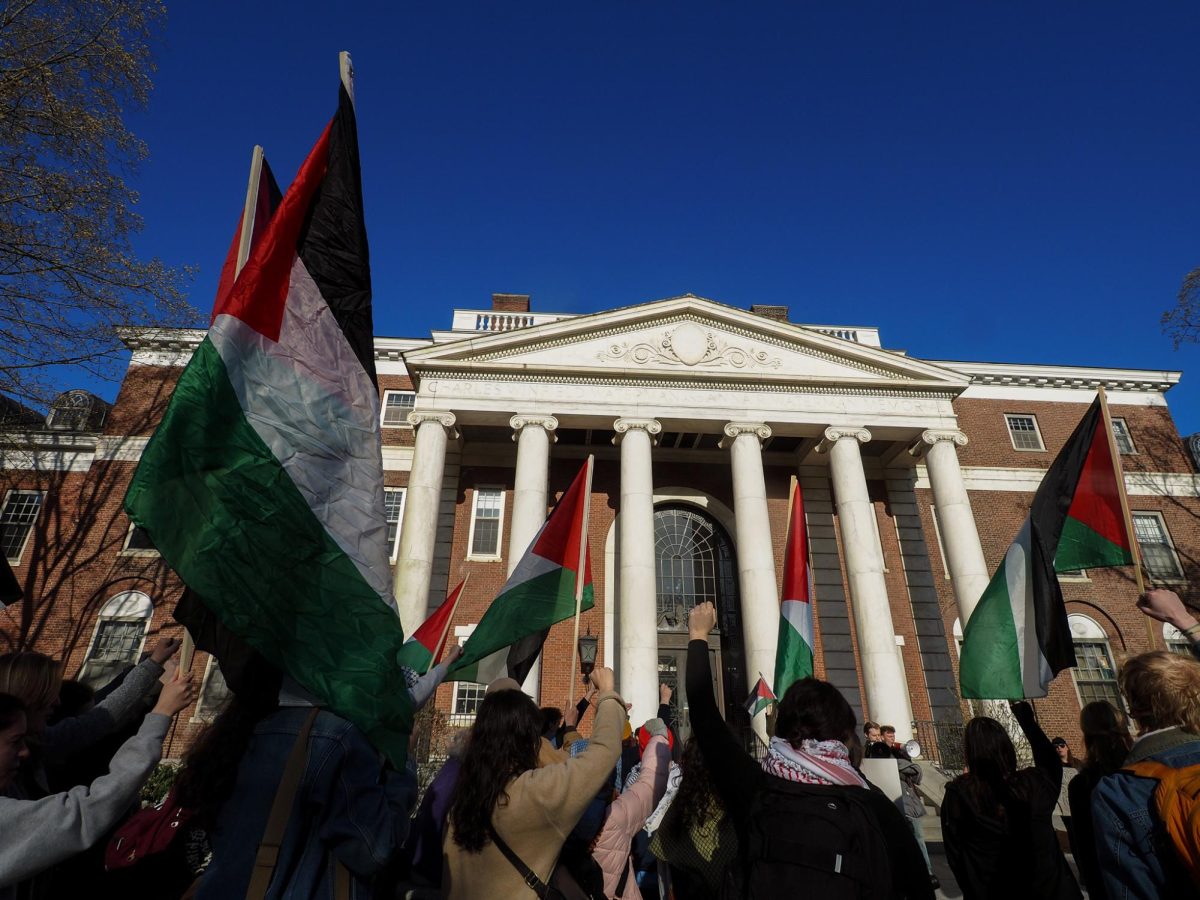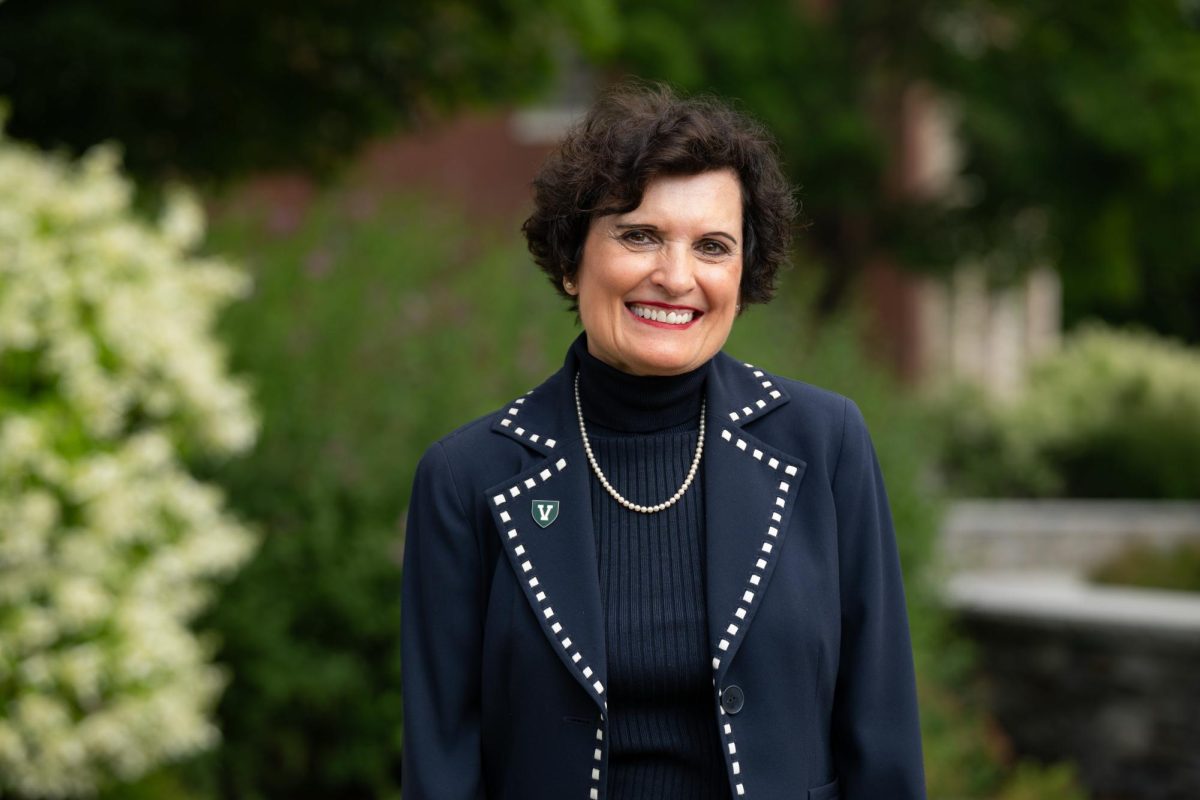The $50 million Dudley H. Davis Center is on schedule for a soft opening in early summer when the UVM Bookstore moves into a two-floor space, University manager for the Davis project, Ray Lavigne said.UVM is making an effort to make the Davis Center a Green Building and receive Leadership in Energy and Environmental Design (LEED) certification. According to LEED regulations, a minimum of 10 percent of materials used must be extracted, harvested, or manufactured within 500 miles. For a project this size, the “increased cost [of local products] is negligible,” said senior project manager Jeff Carlson.In the Berry Construction trailer, a map of areas around Vermont eligible for LEED certification is studded with color-coded plastic tacks for every local source. The sources being used for the Davis Center include 300,000 bricks from Hygate, base stone from Quebec, maple beams from Shelburne, granite benches from Barre and slate from Fairhaven, Lavigne said.From a construction standpoint, the most difficult thing to keep in line is disposal of construction waste, a situation Carlson has been working on with the Vermont Department of Natural Resources and CSWD. In construction, “people aren’t used to segregating waste and recycling,” Carlson said. Construction and demolition (C and D) waste is one of the fastest growing components of the Chittenden Solid Waste District (CSWD) waste stream. Between 1994 and 2005, C and D waste increased by 168.4 percent, while municipal solid waste increased by only 29.9 percent. Enforcement of recycling requirements is often the work of senior project engineer and LEED-certified associate Melissa Graham. Graham said it is hard to negotiate a system of new documentation and regulations that are unfamiliar to contractors and that have been complicated by incomplete or unclear requirements in the LEED program outlines. Despite the challenges, 94 percent of Carrigan Hall was successfully recycled, Graham said.A part of the Davis Center that raises a few student eyebrows is the first floor pub and bistro. “The pub idea seems completely out of line in light of recent dry campus policy,” Alexander Mervak, UVM sophomore, said. Grumbles were also heard regarding the loss of the Bailey-Howe green and the Main Street skyline. This effect will be curbed somewhat when the UVM Bookstore is relocated, said Lavigne. The old bookstore is scheduled for demolition, to be replaced with a new green area.The first floor has been named ‘the Crossroads’ and will have six vendor spaces, including a convenience store, CATCARD office, and print and mail center.The second floor, or ‘the Scene,’ will have 20,000 square feet of dining space and the third floor will be used primarily by student organizations.The fourth floor has two large ballrooms. The building also will have a four story atrium.Performance spaces will be fully wired for sound and lighting, and the outdoor amphitheatre will pack enough juice for a full rock concert, said Lavigne, although he noted that the space would be limited.
Categories:
Davis Center struggles with eco-friendlyness
September 19, 2006
0
More to Discover


